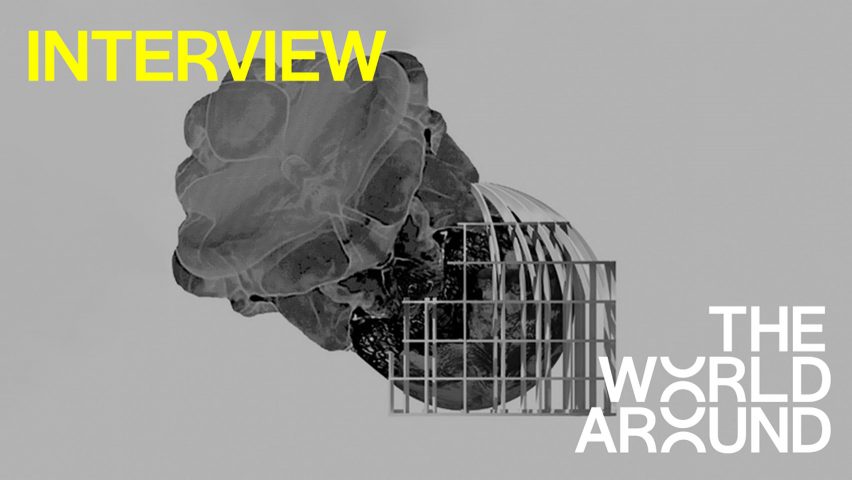
"It's hard to yearn for a return to a pre-pandemic normal" says Design Earth
El Hadi Jazairy and Rania Ghosn of collaborative architecture practice Design Earth discuss how to engage with the climate emergency in the wake of the coronavirus pandemic in this interview with architecture writer Carson Chan, which forms part of our Virtual Design Festival collaboration with The World Around for Earth Day.
The World Around's Earth Day 2020 symposium, which we are broadcasting today as part of Virtual Design Festival, features talks, presentations, films and essays by over twenty visionaries at the forefront of ecological design.
In this interview, writer and curator Chan talks to architects Jazairy and Ghosn about their work as Design Earth, a research office they run from Cambridge, Massachusetts and Ann Arbor, Michigan, USA.
The conversation covers the duo's work and methodology, their vision for a form of architecture that does not involve building buildings, and the role architects have to play in helping to avert climate catastrophe.
Read the interview between Design Earth and Carson Chan below:
Carson Chan: We're speaking at a time when the world we've built around us – its systems, assumptions, structures – have closed in on us. How are you?
Design Earth: We're whirling in circles by the glass panes. Water Stream or Ocean Wave background noises alternate with National Public Radio reporting on pandemic mismanagement. The Octonauts is obligatory screen time for childcare support. We envy the nine-seconds attention span of goldfish.
We are trying to breathe in our own aquarium. Popping bubbles. A siren's song lures us to the surface. From the deep blue, into plastic gyres and hypoxic zones, and then back down again below the surface, amidst islands slowly becoming submerged, and gulping water with some sour or metallic taste. We might call it the type of disgrace and dissonance that violently shakes two hemispheres. It's hard to yearn for a return to a pre-pandemic "normal". Even the goldfish remembers that the nostalgic normal was catastrophic. There's only 12 years until systemic failure, the climate scientists cautioned us.
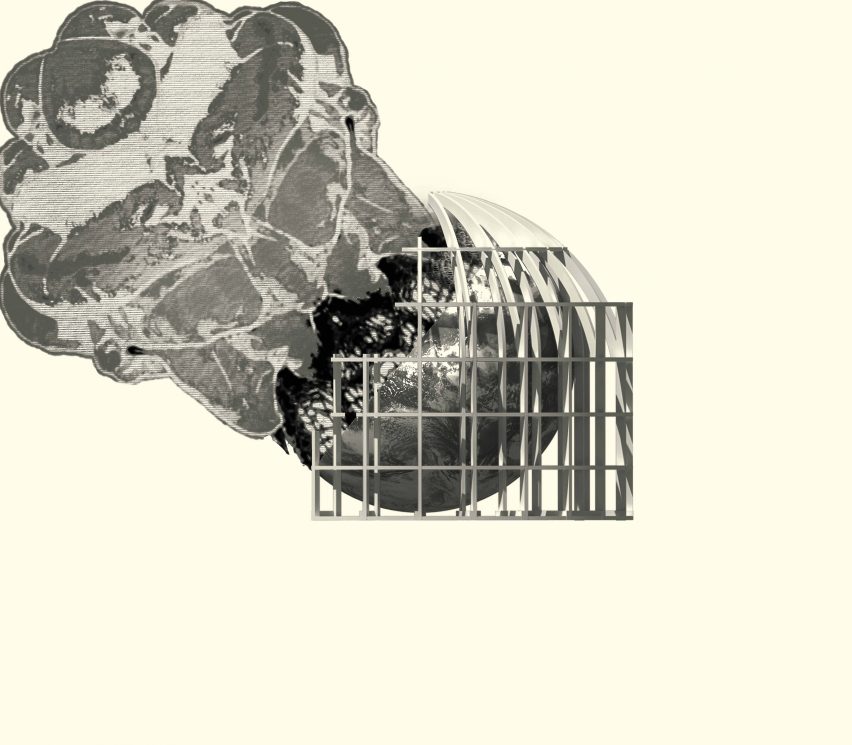
Carson Chan: A part of me is exhilarated that currently, more than half of humanity is in some kind of quarantine. As a species – a community – it looks as if we can fall in line and work, hand in hand, towards a common purpose. Indeed, as so many environmentalists have been saying recently, "normal was the problem." How did we get here?
Design Earth: How did we get here and how do we get out? Right now, we're asking ourselves how we can respond to the climate emergency when all we're dealing with is the other global crisis of public health. In the past months, together with Flag the Earth, we initiated a series of climate emergency declarations on college campuses in the United States, which began this past fall at Cornell University.
After working on speculative fiction on climate change for a decade, to go deeper into the issue and communicate it to a disciplinary public, we felt an ethical obligation to act. Echoing the anxious call voiced by the #FridaysForFuture, our flag, "Act as if our house is on fire," is a banner of visceral disturbance and care for our Blue Marble on fire.
In these works, we solicit the media to treat the climate crisis like the existential emergency it is and plead university administrators to dissociate the mission of higher education from institutional investments in assets that are connected to the causes of climate change. So how to mobilize for climate action all while avoiding mass physical gatherings of "public life"? And what does it mean to act together when the conditions for acting together are devastated or falling away by the spread of authoritarian politics?
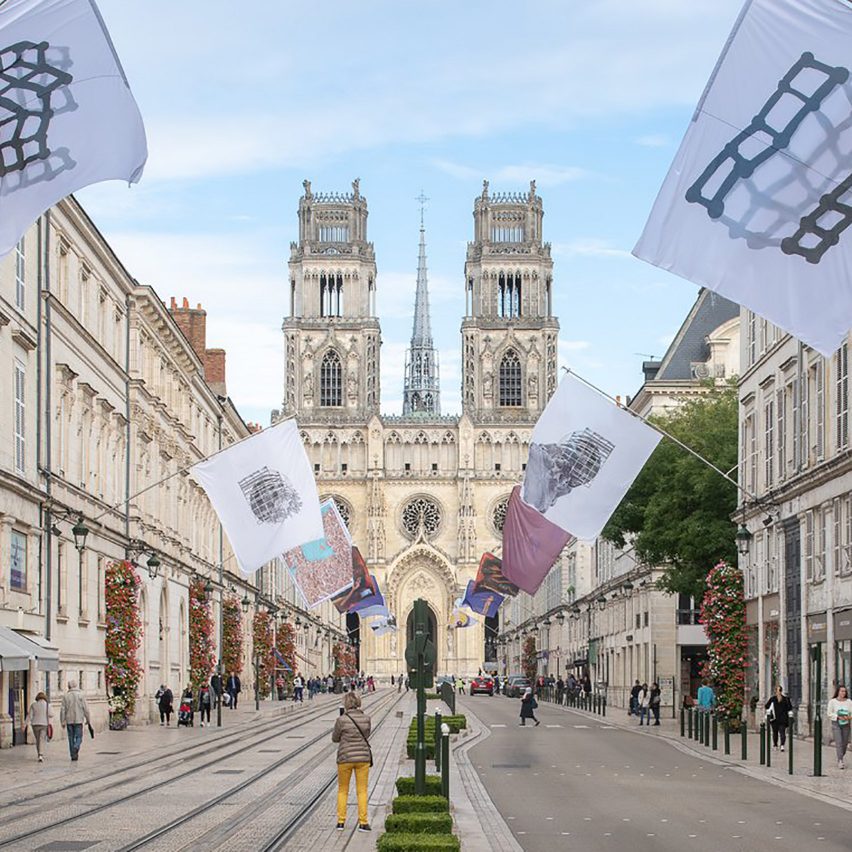
Carson Chan: In the face of authoritarianism, "acting together," in the grassroots sense, is a form of resistance. How does Design Earth "act"? Design Earth is not an architecture office that designs or builds buildings per se. Tell me more about your methods and goals?
Design Earth: There are many other ways of building architecture. Just ask Giovanna Borasi, Hashim Sarkis, and Jeremy Till! The traditional buildings you're referring to are not islands. They are embedded or inscribed within infrastructural networks that extend well beyond their boundaries and the city to procure material, harness labor, and dispose of trash.
Granted, such infra-structures of energy and trash are mostly invisible–hidden below ground or out of sight. Their spatial organization, however, transforms the environment into mines and pipelines and gas stations and air-conditioned interiors, and carbon dioxide emissions. For example, a drawing from After Oil makes visible the displacement of value in oil urbanism by collapsing its buildings, cities and territories. The section drawing indexes iconic architectural landmarks within oil's geological depths and times of extraction.
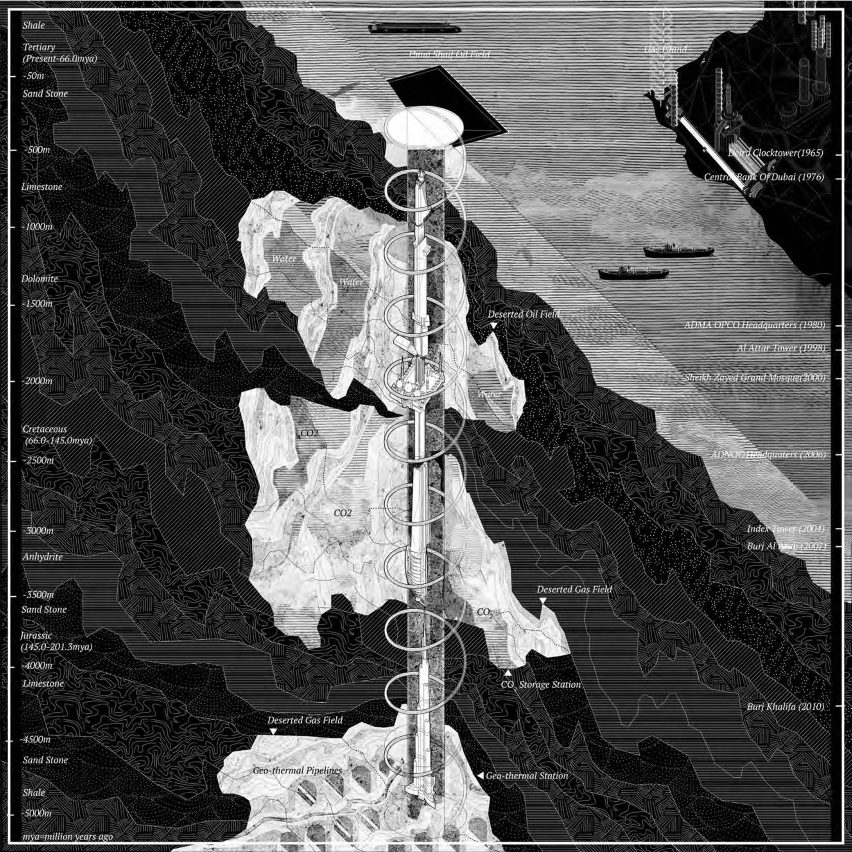
Carson Chan: I totally agree that architecture is infrastructural. Giovanna Borasi's exhibition and book Journeys: How Travelling Fruit, Ideas and Buildings Rearrange our Environment (2011) has been very important to my work. What is a question that drives your practice?
Design Earth: How does architecture make visible this larger territory of human settlement—the planet, really—and reconfigure the value system upon which the object of architecture rests? What matters and what doesn't?
Design Earth is an office that employs architecture's speculative capacity to build the world—one drawing at a time—at a moment when climate change begs the discipline's ability to respond to planetary crises. Design research is our method to engage with such critical issues of our time. Our first book, Geographies of Trash (2015) makes explicit our fourfold methodology, which is also the structure of the book: construct, represent, project, and assemble.
Drawing on knowledge from adjacent spatial disciplines, the architectural project makes visible transformations across scales, and deploys texts, drawings, and artifacts to draw attention to the issues and sites at stake in making trash public. Hence the centrality of representation in our practice. Representation is both an aesthetic and political commitment to animate popular desires to mitigate the environmental crisis.
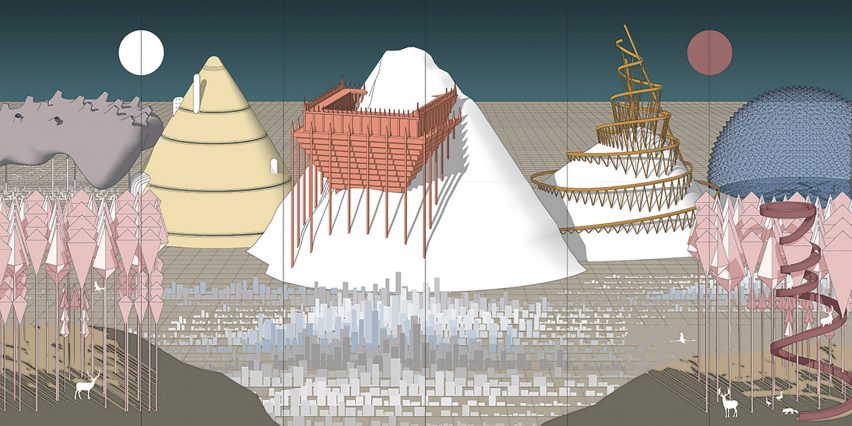
Carson Chan: How should we understand your name, Design Earth? Who is "designing" Earth? The idea that humans have a god-like ability to shape or design the Earth—precisely the problem with what we call the "anthropocene"—is what got us to the brink of environmental destruction, no?
Design Earth: The environmental crisis might not only be a crisis of the physical environment but also a crisis of the cultural one—of the stories and images through which society relates to nature and the environment. It is a crisis that requires a renewed media strategy that mobilize the popular imaginaries and actions for political changes.
Take the example of the Blue Marble, the famous picture of earth from outer space that Apollo 17 beamed back in the late 1960s. The satellite image has become the poster child of the environmental imagination, influencing a generation of scientists and activists. The problem is that this iconic photograph staged a stand-alone planet outside of humanity and its technologies–de-animated and disembodied. As we celebrate the fiftieth anniversary of the first Earth Day, the challenge of communicating climate change and political ecology, as Bruno Latour proposes, is to design a representational machine that overcomes such objectification of the Earth.
The Blue Marble was never the planet we inhabit. It is even less so the world we inhabit today with the poles melting and on fire and the oceans rising. The scientists agree and the metrics are clear and the warning are dire! However, technical indices of environmental destruction alone have failed to generate the necessary dramatic "plot" that would be affectively compelling for a general public. We think of our work as a necessary update to the way the planet has been represented.
A new worldview for a new engagement with the planet. A worldview that accounts for environmental "externalities" such as landfills shoved under a green "carpet," or oil fields offshore and in barren lands. The task of aesthetic "earth design" is to render geographies of the Anthropocene perceptible by turning them into living images, creating an equivalent of ancient mythology. The architectural drawing stages the intrusion of such infrastructural ghosts into the Blue Marble. The purpose? To slow down, not to immediately propose a new building or a next best technology, but to protect and care for the world, to "stay with the trouble" as Donna Haraway puts it.
Carson Chan: What role does architecture play in staving off climate change? Is "slowing down" or "staying with the trouble" enough?
Design Earth: Architecture plays a variety of roles. Climates: Architecture and the Planetary Imaginary (2016), a book that you've also contributed to, captures a good array of disciplinary positions on climate change as both a physical and a cultural crisis. Design Earth responds to the cultural crisis of climate change.
Our book, Geostories: Another Architecture for the Environment (2018), is a series of situated speculative fictions on environmental externalities such as deep-sea mining, ocean acidification, water shortage, air pollution, space debris, and a host of other social-ecological issues. The book is organized into three sections: terrarium, aquarium, and planetarium, each of which revisits these devices of wonder to solicit their future roles in assembling publics around stories of the Earth.
Each story care for previously neglected or unloved things and places. It asks the readers to imagine, to become affectively and ethically entangled, and consequently to get politically involved in whatever ways that they can.
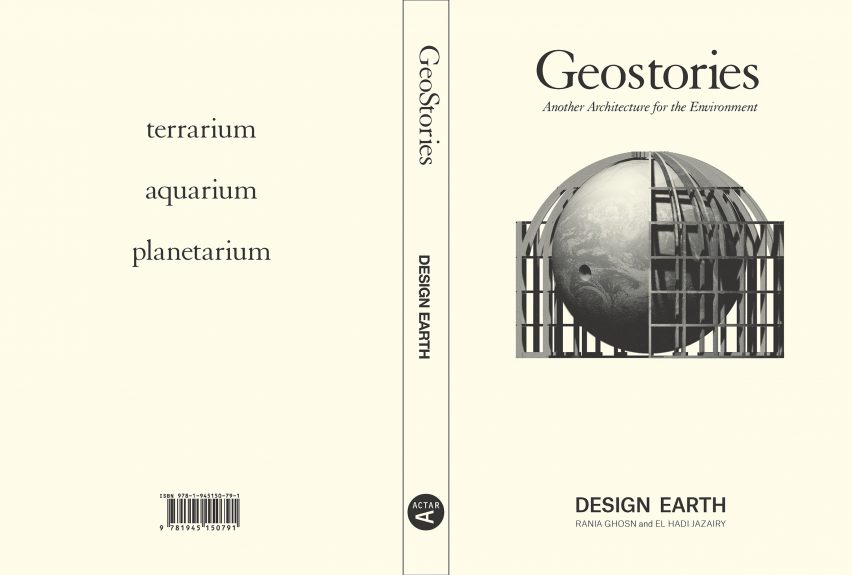
Carson Chan: Let's focus on the aquarium for a minute. In my own work, I think about aquariums not only as microcosms of larger controlled, closed environments, but also as a theoretical object with which to view the world. Tell me about how you've thought about aquariums. How did you first get fascinated with them?
Design Earth: Ah, back to the aquarium! We were fascinated by the early history of the aquarium and the belief in the power of an artifact to represent, or make sense of, the inaccessible, expansive, and mysterious deep sea. The aquarium is inherently sectional and volumetric. It is both a sample section and a miniature of the world. Because such tank is populated with various species, it counters the imagination of the sea as a blank or empty space.
It is a slow medium that favors the immersive now, similar to a lava lamp, which begins to counterbalance the acceleration and exponential curves of neoliberal capitalism. Our project Pacific Aquarium employs this medium and its attributes to communicate the violence of deep-sea mining and climate change. The scalar intimacy of an aquarium brings up close a series of environmental externalities: mining plumes, jellyfish blooms, and ocean acidification.
Because such "museums of nature" are visited across political party lines, the aquarium could be where a "common sense" of climate change is built and its political imaginary constructed. The power of affective experience could bring scientific facts to public knowledge and action! The curatorial and design challenge for these institutions is to continue to engage the difficult but necessary task of conceiving anew the representations of nature currently on display in their galleries.
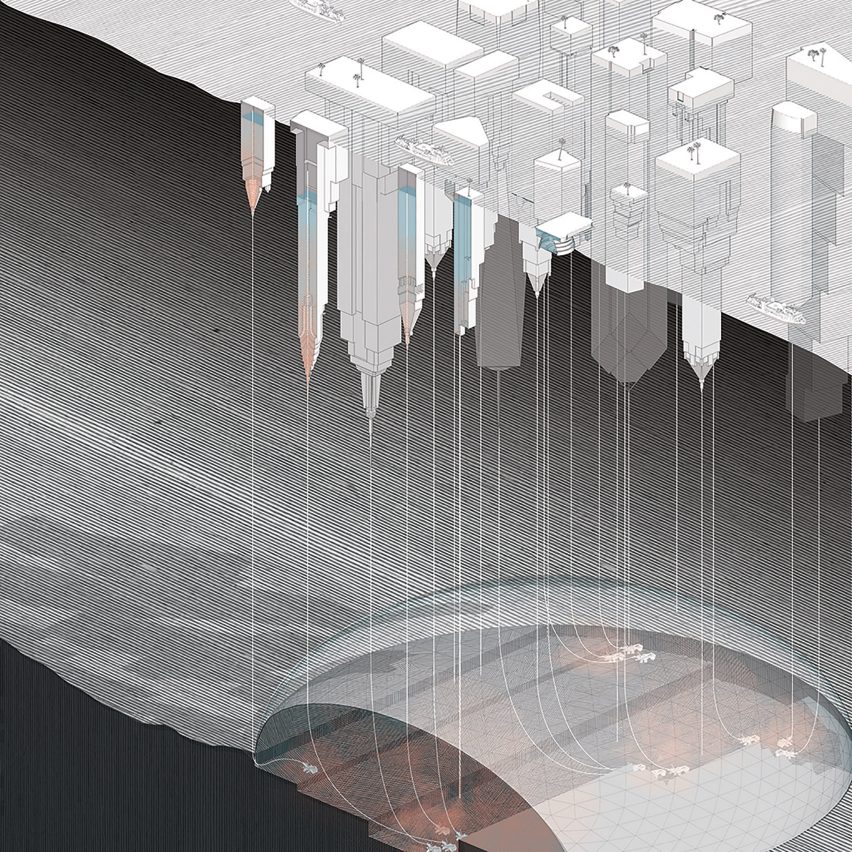
Carson Chan: The current pandemic is a global phenomenon with many architectural effects. Skating rinks are turned into morgues; private spaces are now video-streamed to vast publics; public spaces, traditionally the hart of civic life, are now seen as danger zones; and we now understand that plastic sustains the coronavirus far longer than copper, giving common materials a new microbial dimension. What are some reflections you have about architecture during this time of confinement?
Design Earth: The global outbreak of Covid-19 brings new urgency to the understanding of complex, dynamic, and political interrelations between humans and the Earth. The Covid-19 lockdown has curbed global circulation and emissions allowing us to glimpse, even temporarily, to seeing the world without the accumulation of pollution.
However, Covid-19 has also exacerbated inequalities: billionaires grow richer and the lives of essential "hero" workers are ever more disposable. Meanwhile, amid the outbreak, climate change continues to be actively "produced": environmental protections are suspended or rolled back and criminal penalties are enacted for protesting against fossil fuels. At best, the pandemic has made explicit the systemic vulnerabilities—the cracks¸—that have underpinned the system throughout and invited an affective reset of how to care about and for each other.
What is required for a climate transition is a political strategy that accounts for rather than sacrifices the most vulnerable in our society: the poor, elderly, immuno-compromised, incarcerated, ethnic minorities, and homeless. Sustainability—sustenance-ability—is intimately tied after all with an enduring sense of life: how life is valued, and with what degree of suffering or hope. Now that the pandemic has temporarily upended the world, it is as timely as ever to recall and take on Michel Serres's influential book Le Contrat Naturel (1990). Aesthetics might be a determining component in calling for a natural contract to be negotiated between Earth and its inhabitants.
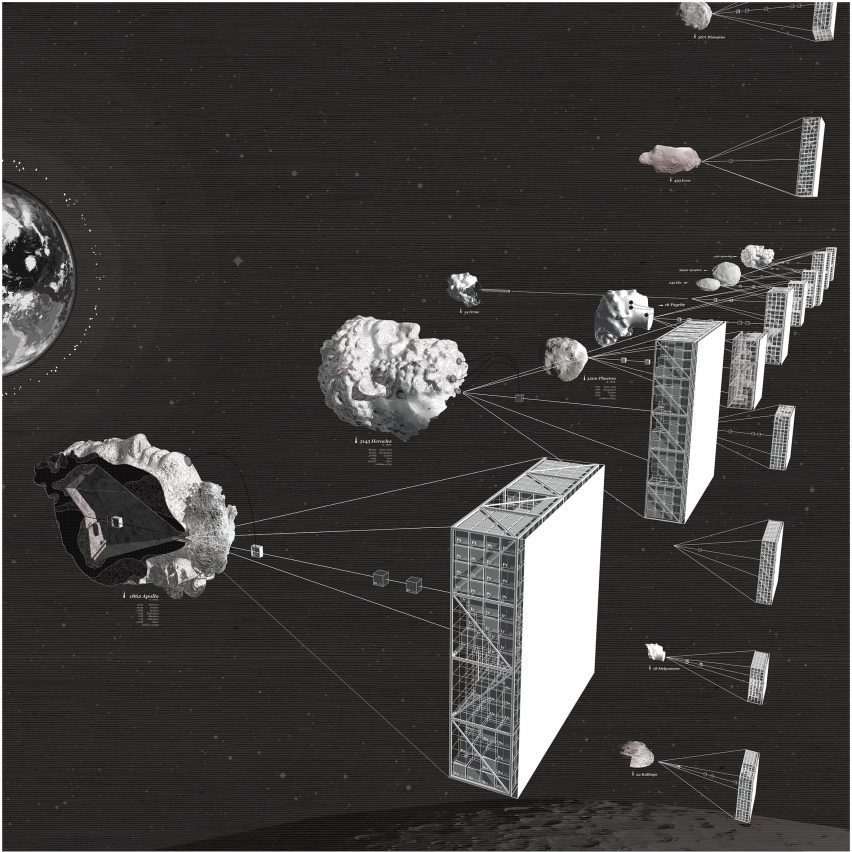
Design Earth and Carson Chan would like to support 350.org and its mission to build the climate movement. Bill McKibben, co-founder of 350.org, told a Vox reporter that building the climate movement is crucial because although there are some effective mitigation solutions, they're not being deployed fast enough.
"That's the ongoing power of the fossil fuel industry at work. The only way to break that power and change the politics of climate is to build a countervailing power," he said. "Our job — and it's the key job — is to change the zeitgeist, people's sense of what's normal and natural and obvious. If we do that, all else will follow."
